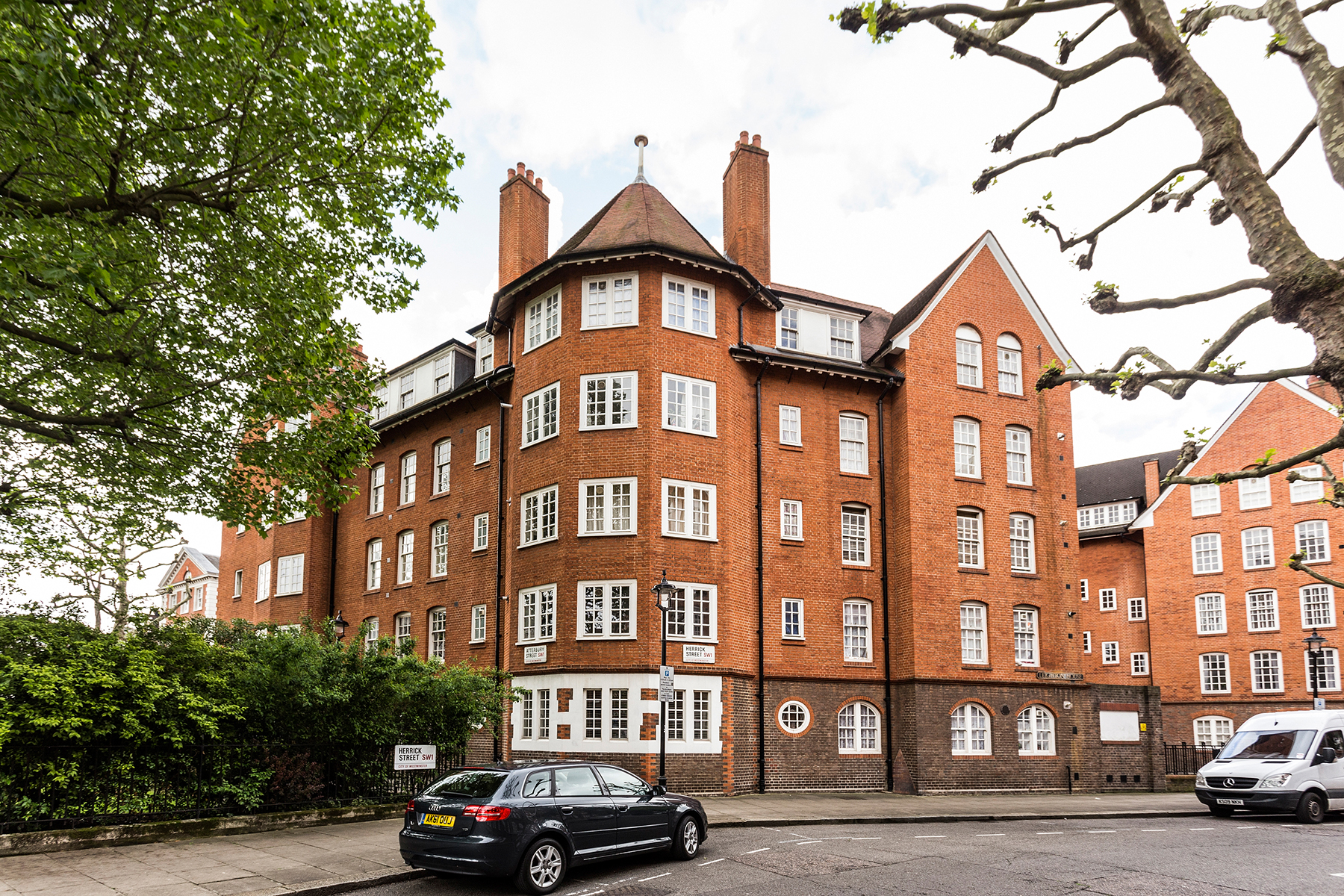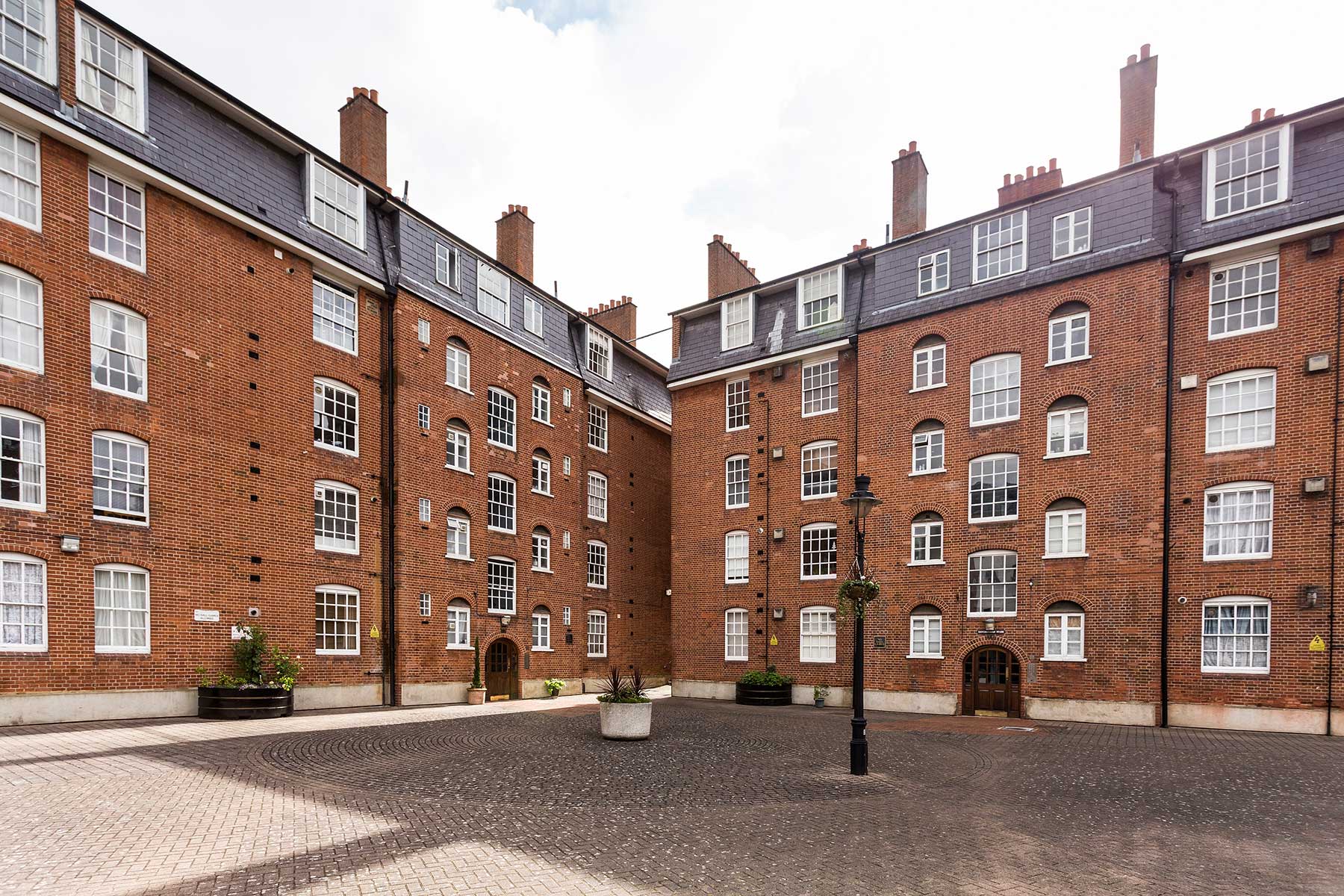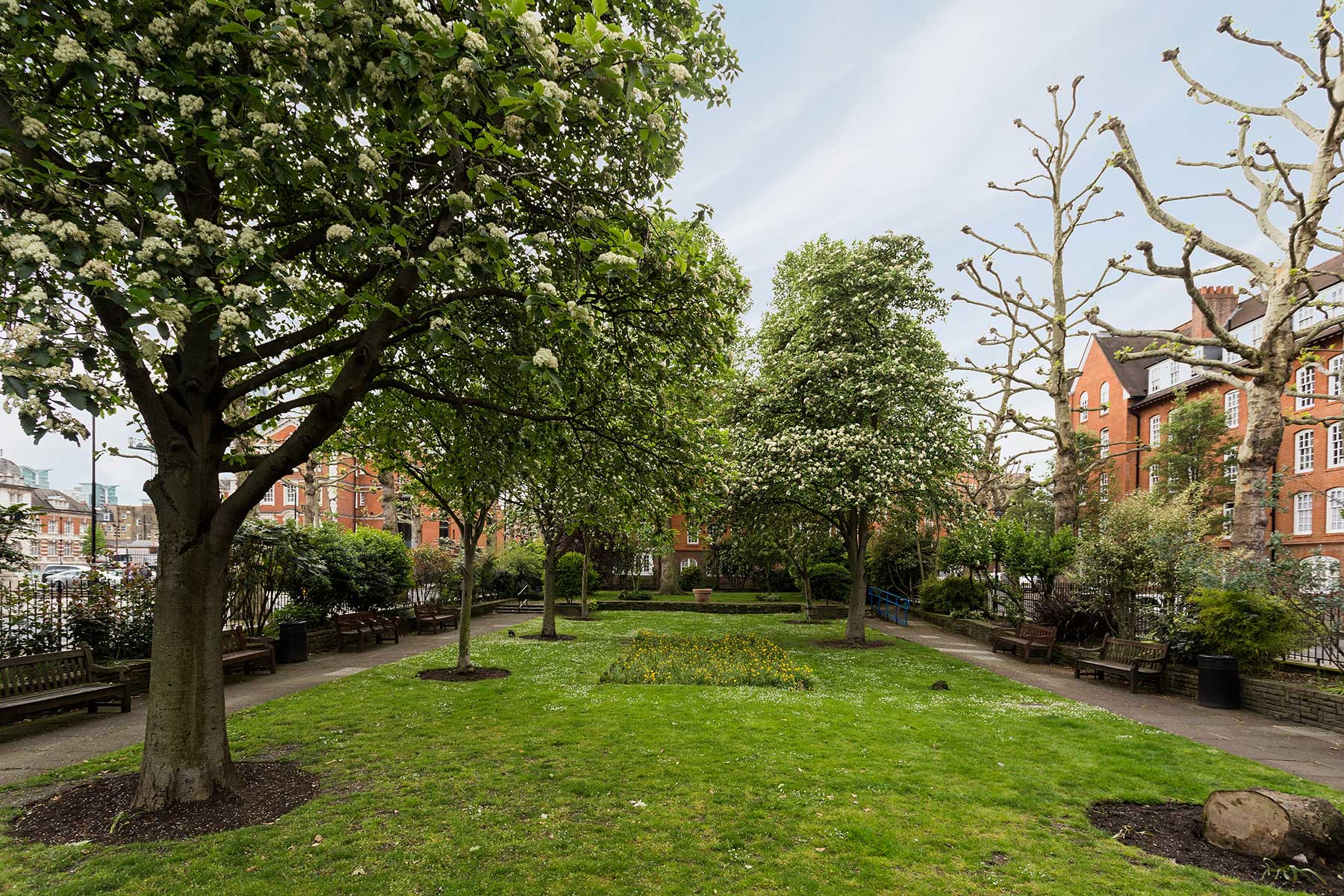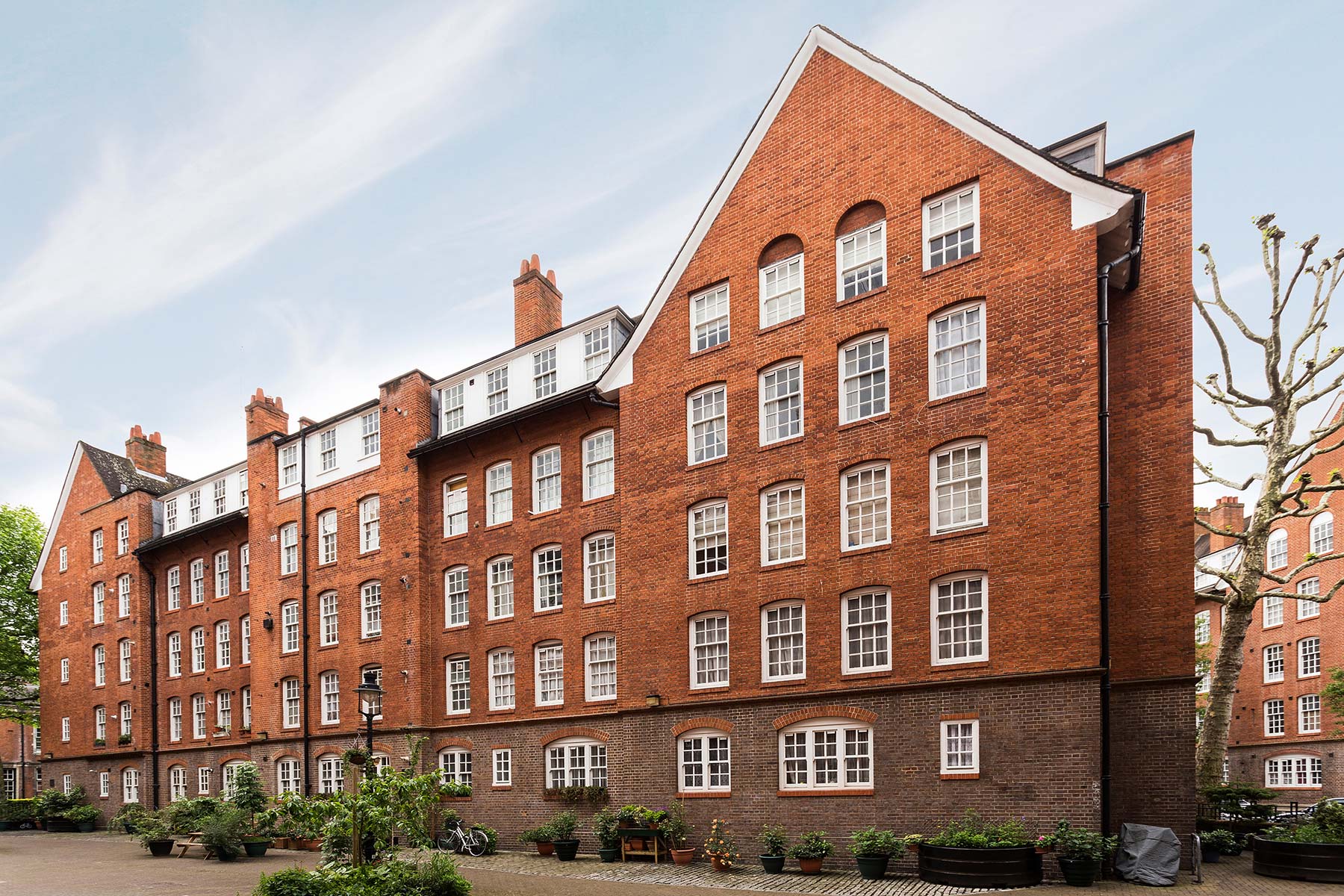
Available Sales or Lettings Properties within Millbank Estate
We do not share the information you provide with any third parties.Millbank Estate, an Overview
Originally developed as social housing in the late 19th Century, the Millbank Estate has – through former Prime Minister, Margret Thatcher’s Right-to-Buy scheme – become a hugely popular, desirable property investment appealing in particular to but-to-let investors or owner-occupiers looking for a [relatively] cheap London pad.
Millbank Estate is located immediately behind Tate Britain and just on the fringes of Westminster’s Parliamentary District. All of London is easily accessible from this area with Pimlico Underground Station being only a few minutes’ walk away and many of London’s key attractions are also within walking distance.
Purchasing within the Millbank Estate offers an excellent opportunity to own a piece of solid London housing stock that remains forever covetable.
A History of Millbank Estate
From its very conception, Millbank Estate was always intended to be an exemplary form of social housing. Built-in the late 1800’s it was influenced by the arts and crafts movement and also the Queen Anne style of architecture, with a central courtyard or garden and the distinct red brick being such features that were more like the private mansion blocks of Victoria and Chelsea.
Made of 15 houses the development initially housed over 4000 tenants but due to remodelling after the Second World War, it was rationalised into about 550 fully self-contained flats. An integral part of the Millbank Conservation Area, Millbank Estate is situated directly behind Tate Britain and appropriately the estate’s 15 houses are each named after a notable British Artist including; Ruskin, Turner, Gainsborough and Stubbs.
Tate Britain itself was built around the same time as the estate. The gallery, a gift from Sir Henry Tate, was originally known as ‘The National Gallery of British Art’ and was built to house the nation’s paintings including a substantial collection of works by JMW Turner. However, even from the outset, the gallery was popularly known as ‘The Tate’ and so was renamed in honour of its benefactor.
To the southeast of Millbank Estate and next door to Tate Britain, is the former Royal Army Medical Corps and Millbank Barracks with its open parade ground. This has now been taken over by the University of the Arts London and is home to Chelsea College of Art & Design. With the parade ground being left open, the college hosts a number of public exhibitions and events as well as has a small public café and art supplies shop.
Collectively the Millbank Conservation Area is a lovely example of late 19th Century Architecture with a considered, thoughtful layout that has a mix of public and private spaces. The public garden at the front of the estate is beautifully maintained and is a popular yet peaceful spot for the local office workers to enjoy lunch al fresco.
Living & Investing In Millbank Estate
Admittedly the Millbank Estate is not for everyone. Council tenants still makeup 40% of the residents which may deter some people and yet its management team are an award-winning body and the gardens and communal areas are kept spick and span.
Grade II listed, all of the flats within the Millbank Estate are of generous proportions and are of traditional, functional layouts that appeal to people who like cosy intimate spaces rather than open-plan apartments.
The estate represents an opportunity for the intelligent investor with flats suitable and sizable enough for couples, families and professional sharers. The nearby university means affluent students should certainly be considered by landlords, parents too might consider this a wise investment for their children looking to get on the property ladder. Owner-occupiers can be assured that the strong Tenant Management Organisation (TMO) and overall community feel means that the estate remains clean and peaceful. This writer can personally vouch for the quiet pleasantness of the blocks, having visited friends on the estate and also having previously lived in the area for a number of years.
Millbank Estate & Beyond
Aside from the Tate Britain, (This incidentally has a river pier with ferry service taking passengers up to Tate Modern.) London is surely one of the most artistically diverse cities and with the Millbank Estates artistic monikers, it is worth exploring what one of the world’s greatest capital has to offer the art-loving property owner.
Cork Street, St James and Mayfair all have a number of well-renowned fine art dealers offering a wide range of specialism’s from ancient Islamic and Oriental art to Russian fin de siècle and 19th century British. The East End of London is well-established as the go-to district for contemporary art, and reportedly boasts over 50 galleries within a single square mile. Across the river, and within walking distance of the Millbank Estate, Damien Hirst has opened his own gallery in Vauxhall and Jay Joplin’s White Cube Gallery now has a major space on Bermondsey Street. Also on Bermondsey Street, fashion lovers will love the bright orange and pink building that is the esoteric Fashion and Textiles Museum founded by eccentric, 1960s fashion designer, Zandra Rhodes.
While Chelsea College of Art & Design has its main campus opposite The Millbank Estate, The University of The Arts London, which Chelsea is part of, is made up of six of arguably the world’s best art educational establishments. Scattered across London, each University or College boasts notable alumni such as; Gilbert & George, Alexander McQueen, Neville Brody, Stella McCartney and Anish Kapoor. Therefore it is seriously worth begging, borrowing or stealing an invitation to the end of year shows that each College hosts if you want to find out who the next hottest artists and designers are going to be.
Finally, while going on the art and fashion trial, residents of the Millbank Estate might also like to track down examples of work and statues dedicated to the namesake of their home. The national gallery and Tate Britain, both rather obviously own works by each of the artists that the Millbank Estate is named after but there are many less well-known works and monuments recognising these great artists dotted about London. We suggest starting with the statue of Millais on the grounds of Tate Britain and then heading to see statues of both Reynolds and Hogarth in Leicester Square. From there the rest is for you to discover….
Millbank Estate














